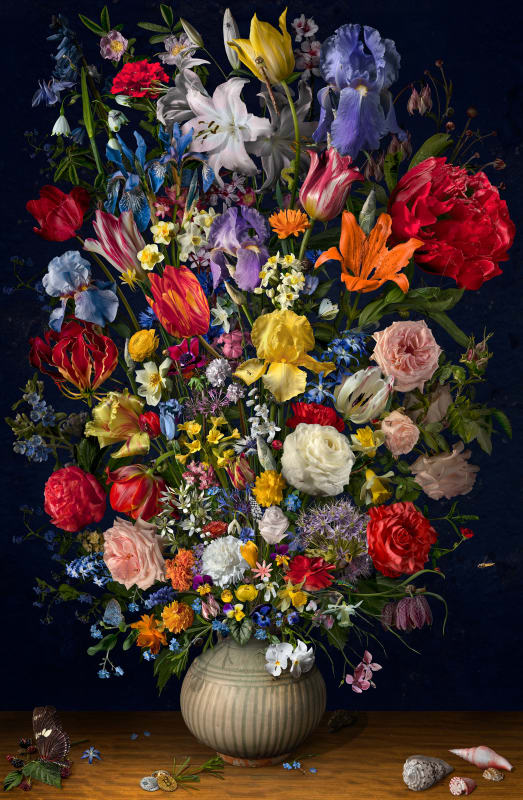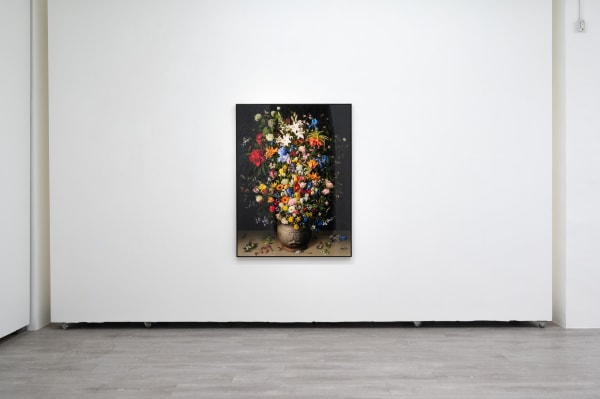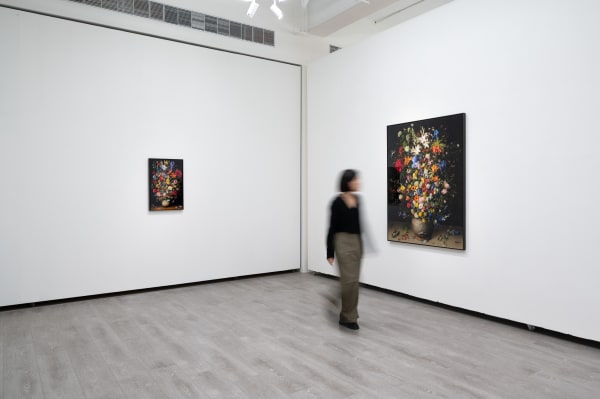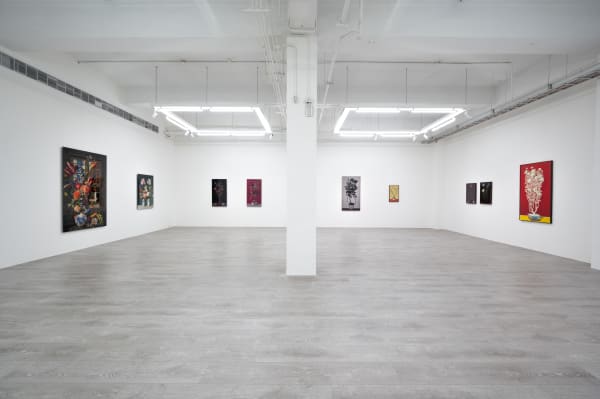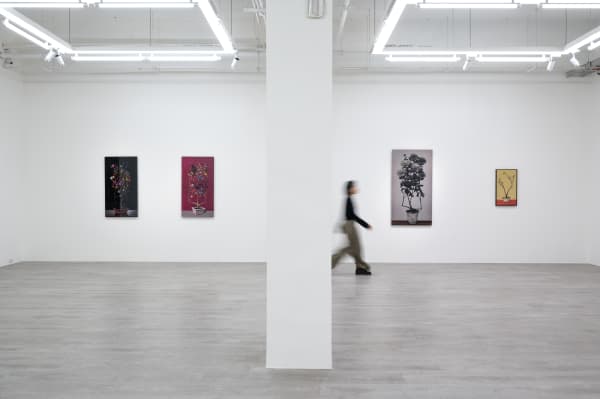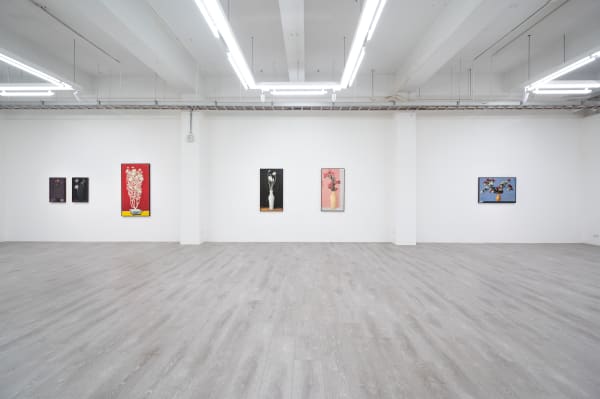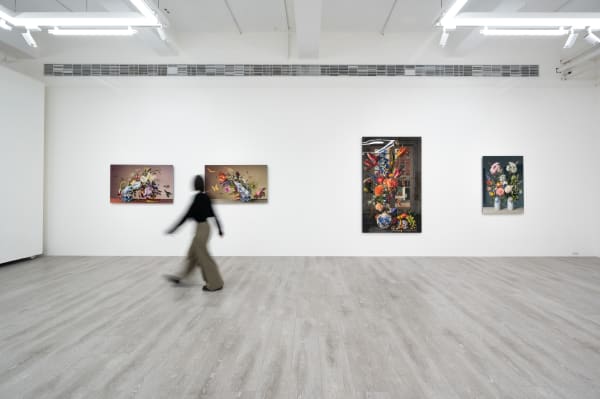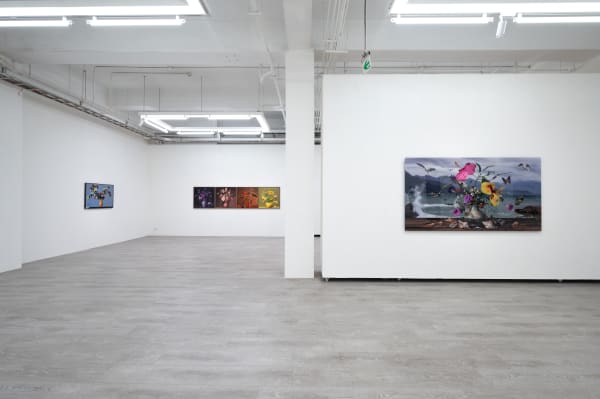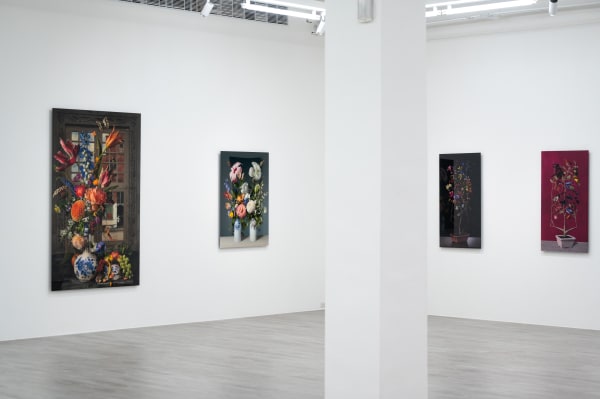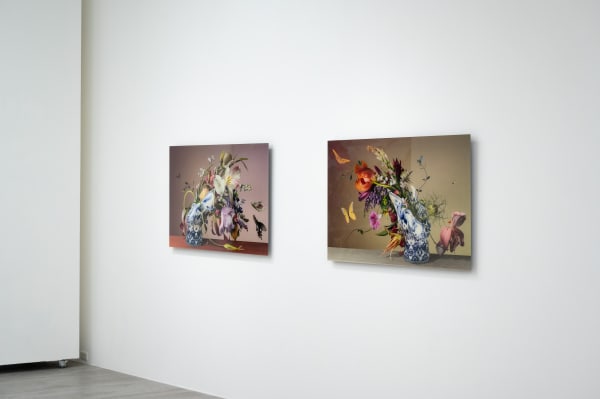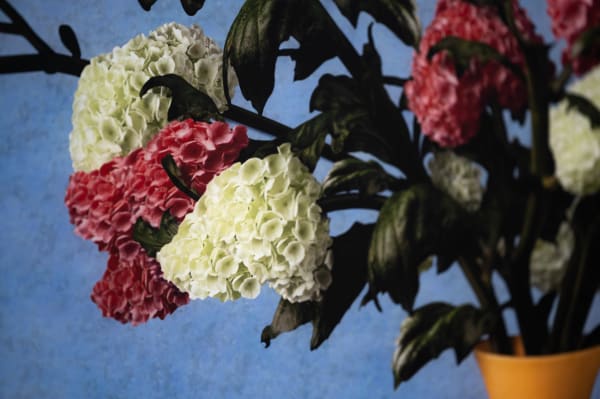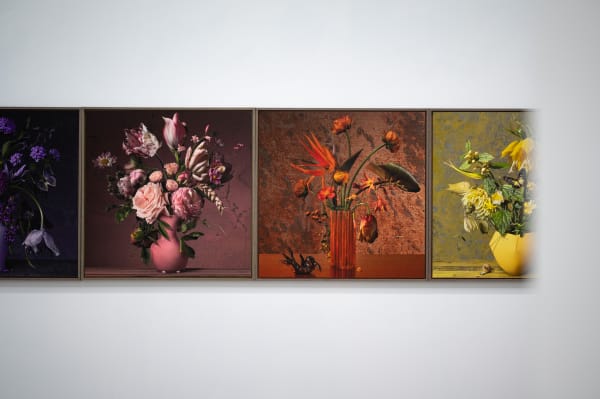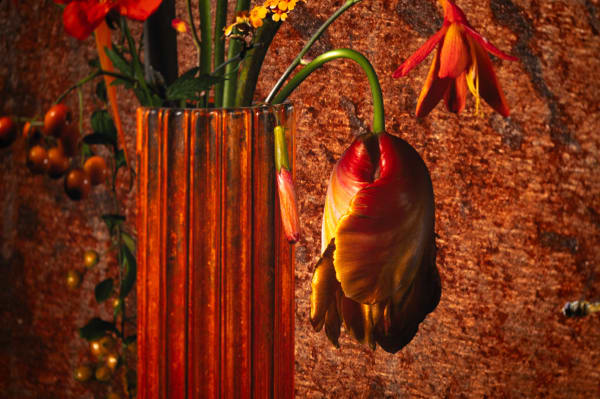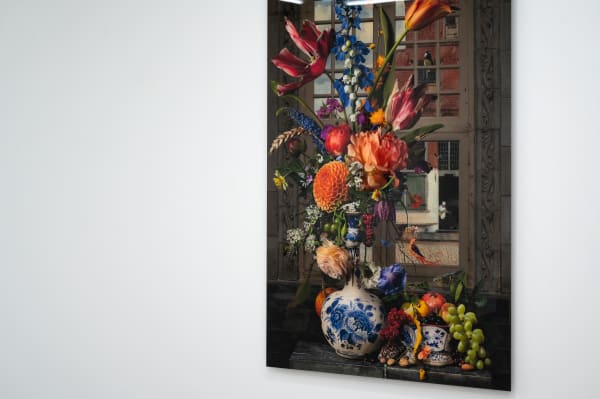Bas Meeuws: A Feast for the Eye: Solo Exhibition
To really see Bas Meeuws' flowers, you have to take your time. If you are too hasty, you will just see a vase of flowers, but if you look more closely, you will see that each and every flower has an incredible beauty. There is the reflection of the light from a leaf, the elegant arch of a stem. Your gaze explores petals, insects and leaf veins, roams the landscape behind the flowers and lingers on the vase, with its distinct shape and decoration. You now start to notice that there is a friction: the proportions between the flowers are strange, the play of light and shadow has something enigmatic.
Looking properly is for the eye what tasting a refined dish is for the tongue. Bas Meeuws' work seduces you into employing the power of sight for pure sensory pleasure.
Our gaze follows that of the artist. Meeuws has a sharp eye for the richness of the shapes, colours and textures of flowers, insects and birds. He observes them intensely, whether they are in his own back garden, a municipal park, the Muiderslot gardens, the Hortus Botanicus in Leiden or the magnificent national parks of Taiwan. Camera, software and printing techniques are extensions of his unparalleled human eye. He uses technology to give us, the spectators, what he has seen. "See how beautiful it is" is what his flower still lifes are silently saying. A feast for the eye.
Allowing one's sharpened gaze time to wander through the unbelievably detailed flower compositions will inevitably set off a stream of associations and thoughts. Flowers acquire an individual presence with their form, which is both powerful and delicate. You are astonished by the complex architecture of a rose, the refined construction of a lily of the valley, the glistening of a deep-red tulip petal. If you happen to see a number of his photos next to each other, you will notice the enormous variety of plants.
The perfect beauty of flowers is intensified by their transience. Where life blooms so abundantly, the thought of death is never far away. A dissonant, wilted flower or a threatening, overcast sky creates friction in the picture and a slight feeling of unease.
Again, our thoughts immediately return to the seventeenth-century Dutch flower still lifes, which you may well have ignored if you ever saw them hanging in a museum. Now, however, if you come across them again, you will stand right in front of them this time to look at them better.
The pleasure of looking spreads from art to reality. With your eye having been trained by the flower still lifes, you now look at the crocuses by the roadside and the forget-me-nots on the waterfront more carefully. Looking at art is an exercise in observing beauty in nature in all its fragility. Bas Meeuws' photos are also a tacit plea for more care of and consideration for our natural surroundings.
Look, enjoy, and look again.
Anneke van Wolfswinkel
Writer and art critic
-
Born in 1974 in Heerlen, the Netherlands, Bas Meeuws is a celebrated Dutch photographic artist known for his digitally composed floral still lifes. Inspired by the still life tradition of the Dutch Golden Age, when floral paintings were seen as symbols of wealth and refinement, Meeuws reimagines this genre through contemporary digital photography. He travels extensively to photograph individual flowers, insects, and landscapes, carefully assembling them into richly detailed compositions that bring new life to each bloom.
Blending historical reference with modern technique, Meeuws creates images that feel both timeless and current. Each composition reveals the extraordinary diversity of the natural world and invites viewers to reflect on its fragile beauty.
In his Untitled (#141) from the Taiwan series, Meeuws incorporates the coastal scenery of Taitung into a floral arrangement. The vibrant flowers, captured in full bloom, are placed against a brooding sky, creating a quiet tension between life and impermanence. This subtle dissonance evokes a sense of unease, highlighting the transient nature of beauty.
In 2019, Meeuws collaborated with the Parisian fragrance house Diptyque on a collection of six limited-edition perfumes, bringing the flowers from his compositions further into the physical world through scent.
His works are included in several notable public collections, including the Westfries Museum in Hoorn, Medisch Centrum VUmc in Amsterdam, Gemeentehuis Amstelveen in Amsterdam, Rijksmuseum Muiderslot in Muiden, the Ministry of Foreign Affairs of the Netherlands, Leiden University Library, and the Museum of Art and Photography in Bangalore, India.
